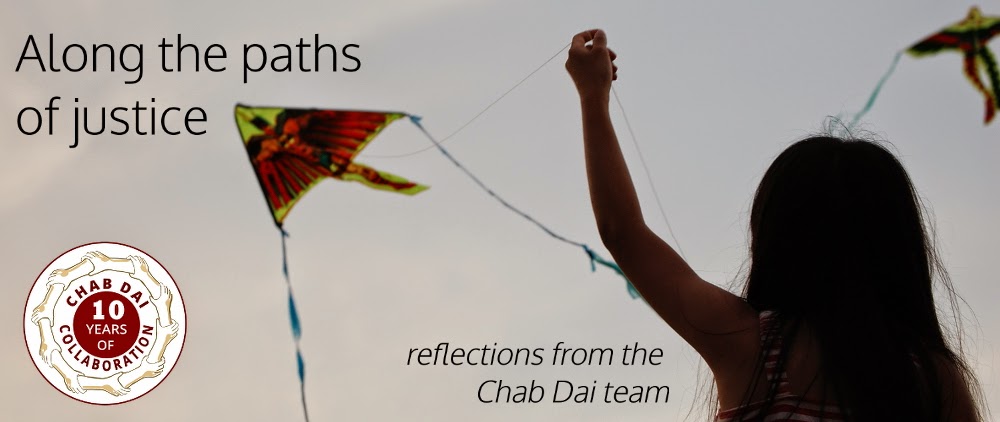The end of 2015 is set to be the launch of the new single
market in Southeast Asia, otherwise known as the ASEAN Economic Community
(AEC). Ten countries in the region, including Cambodia, are expected to benefit
from “the free flow of goods, services, investments, and skilled labor, and the
freer movement of capital across the region.” (Nay Pyi Taw Declaration, May
2014)
But with the construction of the Greater Mekong Sub-Region’s
special economic zones also coming to a close in the next twelve months, what
are the implications for migration in the area, and how will this affect Cambodia?
 Is Cambodia ready for
the AEC?
Is Cambodia ready for
the AEC?
The
AEC is predicted to increase Cambodia’s real GDP by 4.4 %, its exports by
5.3 % and private investment by 24.8 %.
However, poor infrastructure in road, rail, ports, as well
as the limitations of the local electricity supply and telecommunications pose
practical problems, according to
Hing
Vutha’s report ‘Cambodia’s Preparedness for ASEAN Economic Community 2015
and Beyond.’ Bureaucratic and logistical costs currently make the export
procedure in Cambodia lengthy and expensive.
Cambodia may also lag behind others in terms of education and
skill, due to the low literacy rate (73.9% 2012) and the majority of workers
still educated only to primary school level. Many may not be able to compete
with other countries like Singapore and Malaysia in a single jobs market.
Movement of skilled
and unskilled workers
According to the
ARTNeT policy brief on
‘Moving Freely? Labour Mobility in ASEAN’, Mutual Recognition Agreements (MRAs)
will ensure standard qualifications are recognised in professions like
accountancy and medicine across ASEAN, alongside the development of the ASEAN
Qualification Framework. However, there is nothing in place for unskilled
workers.
“By limiting substantial co-operation on labour market access
to high-skilled labour, ASEAN members are missing out on the opportunities and
positive developmental impacts from facilitating well-managed migration.”
AEC’s agreements The Movement of Natural Persons (2012) and
the ASEAN Comprehensive Investment Agreement (ACIA) are inherently selective,
the first created with businesses sending personnel overseas temporarily in
mind, and the second applying only to those who are employed with a registered
company. These do not include unskilled labour or people simply seeking
employment or citizenship elsewhere, one of several points where the AEC
differs from
the Europe Union.
 |
Helen Sworn on
'Preventing Slavery & Trafficking in Persons in ASEAN', Bali |
Increased migration;
increased vulnerability
The Asian Development Bank’s (ADB) plans to facilitate trade
between the six GMS countries (Cambodia, Vietnam, China, Laos, Malaysia and
Thailand) are also gathering steam this year.
Speaking on the subject earlier this month at the
8th Summer Institute in International Humanitarian Law and Human Rights in Bali, Indonesia, Chab Dai’s Helen
Sworn has warned on the implications of Cambodia’s position in the midst of two new
economic corridors that will essentially link China and India via Southeast
Asia. ADB
estimated back in 2004 that half a million trucks will travel through the
region per day, which will increase the spread of diseases like HIV/AIDs as
well as the risk of unsafe migration. Source communities will have fewer
prospects and access to education as people move to economically stronger
countries, with children left behind as parents migrate for work.
Human rights NGOs like Adhoc and NGOCRC have also warned
that the ASEAN integration will lead to greater numbers of children in
particular being trafficked or abused.
Reported
in Voice of America, Ya Navuth, head of the NGO Caram said:
“Children could also face more risk from economic pulls,
experts warn. That includes families sending their children to work in other
countries, where they will be vulnerable to abuse.”
How can Cambodia respond
to the ASEAN and GMS changes?
 |
| Hing Vutha, speaking at the Chab Dai member meeting in May |
The Migration Policy Institute report on ‘A ‘Freer’ Flow of
Skilled Labour within ASEAN: Aspirations, Opportunities, and Challenges in 2015
and Beyond’ recommends ‘temporary schemes’ to expand the market access for low-skilled
labours, creating legal channels to reduce irregular migration and ensuring
sending countries be involved in monitoring the candidates before they
emigrate.
Hing Vutha meanwhile, brings the emphasis back to education:
“Improving the education system should be the prime policy
focus…Cambodia can benefit from the AEC since it can continue to import skilled
labour from other ASEAN countries to tide it over this period of skills
shortage. But over the longer term, the country should also focus on developing
the skills of domestic labour so that it can reduce its dependence on foreign
skilled labour.”
Though the ASEAN Convention on Trafficking in Persons and the ASEAN Plan of Action are expected to make positive steps on this issue before the end of the year, it’s clear that we and other organisations fighting to
stop human trafficking in the region will need to maintain
a coordinated effortto work across border lines, not just within one country.











